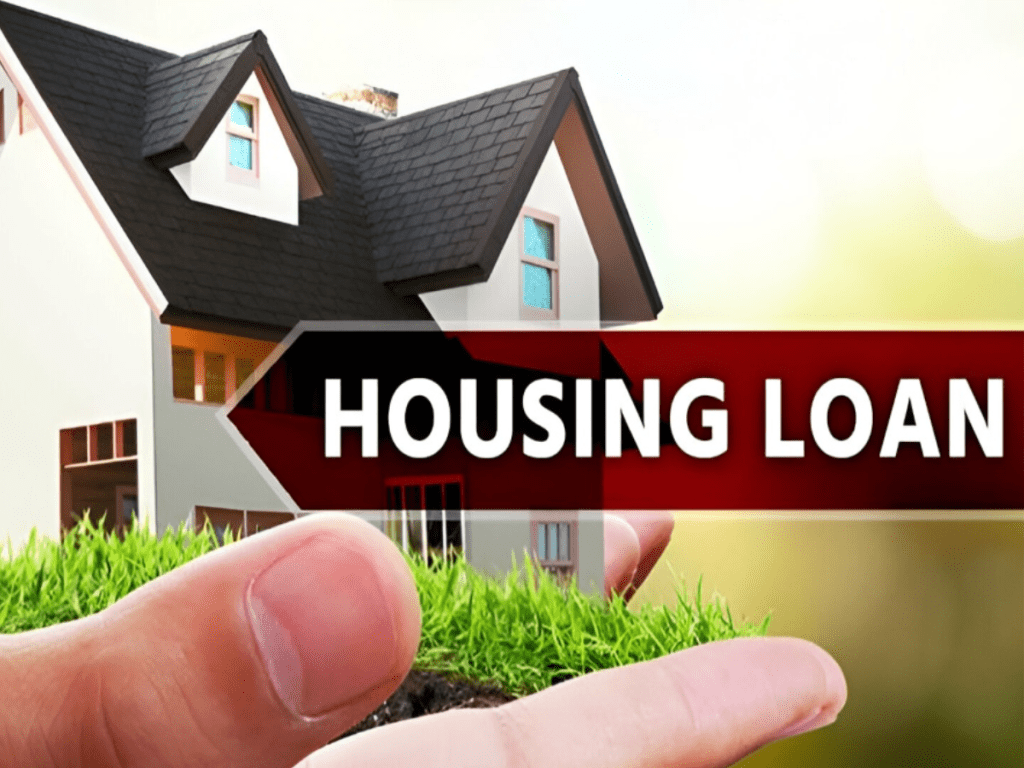Introduction
When it comes to buying a home, one of the most significant decisions you will make is selecting the right type of home loan. The type of mortgage you choose can influence the interest rate you pay, how much you borrow, the length of time you will be in debt, and your monthly payment obligations. To make an informed decision, it is crucial to understand the different types of home loans available, as well as their respective pros and cons. Below, we will discuss the most common types of home loans and provide insights into their benefits and potential drawbacks.
1. Fixed-Rate Mortgages
A fixed-rate mortgage is a traditional home loan where the interest rate remains the same for the entire term of the loan, typically 15, 20, or 30 years. This type of mortgage offers stability because your monthly payments will not change over time.
Pros of Fixed-Rate Mortgages:
- Predictable Payments: Since the interest rate remains constant, your monthly mortgage payments will stay the same throughout the life of the loan. This predictability can be helpful for budgeting and long-term planning.
- Protection from Interest Rate Increases: If interest rates rise in the future, your fixed rate will keep you protected from these increases.
- Long-Term Financial Planning: With fixed payments, it’s easier to plan your finances over the long term, especially if you have a consistent income.
Cons of Fixed-Rate Mortgages:
- Higher Initial Interest Rates: Fixed-rate mortgages often come with higher interest rates compared to adjustable-rate mortgages (ARMs), especially in the early years of the loan. This can result in higher monthly payments at the start of the mortgage term.
- Less Flexibility: Fixed-rate mortgages may not be ideal if you plan to move or refinance within a few years. Paying off a fixed-rate mortgage early can be costly in terms of closing fees or prepayment penalties.
- Overpaying if Interest Rates Drop: If interest rates fall significantly after you lock in a fixed-rate mortgage, you may end up paying more than you would have with an ARM.
2. Adjustable-Rate Mortgages (ARMs)
An adjustable-rate mortgage is a home loan with an interest rate that changes periodically based on the performance of a benchmark index. The rate is usually fixed for an initial period, such as 5, 7, or 10 years, after which it adjusts annually.
Pros of Adjustable-Rate Mortgages:
- Lower Initial Interest Rates: ARMs typically offer lower initial interest rates than fixed-rate mortgages. This can result in lower monthly payments in the first few years of the loan, which can be beneficial for borrowers who expect their income to increase or plan to move before the rate adjusts.
- Potential for Lower Overall Cost: If interest rates remain stable or decrease, an ARM could result in a lower overall cost over the life of the loan.
- Flexibility: If you anticipate selling the property or refinancing within a few years, an ARM may allow you to take advantage of the initial low rates without locking you into a higher fixed rate.
Cons of Adjustable-Rate Mortgages:
- Uncertainty After the Initial Period: Once the fixed-rate period ends, your interest rate may increase, which will lead to higher monthly payments. The unpredictability of future payments can make budgeting more difficult.
- Rate Caps and Floors: While ARMs often have rate caps (which limit how much the interest rate can increase) and floors (which set a minimum interest rate), there is still a risk that rates could rise significantly, resulting in a payment increase that might be difficult to manage.
- Complex Terms: ARMs can be complicated, with various indexes, margins, and adjustment periods. Understanding how your rate will adjust can be difficult, making it hard to plan for future payments.
3. FHA Loans (Federal Housing Administration Loans)
FHA loans are government-backed mortgages that are designed to make homeownership more accessible for borrowers with lower credit scores or limited savings for a down payment. FHA loans require a lower down payment than conventional loans, and they are often easier to qualify for.
Pros of FHA Loans:
- Lower Down Payment Requirements: FHA loans allow borrowers to make a down payment as low as 3.5%, making homeownership more accessible, especially for first-time homebuyers.
- Flexible Credit Requirements: FHA loans are easier to qualify for compared to conventional loans, especially for borrowers with less-than-perfect credit histories. This can be a huge benefit for individuals who may struggle to secure a loan through traditional means.
- Lower Closing Costs: FHA loans typically have lower closing costs compared to other loan types, which can reduce the amount of money you need to bring to the closing table.
Cons of FHA Loans:
- Mortgage Insurance: FHA loans require both an upfront mortgage insurance premium (UFMIP) and monthly mortgage insurance premiums (MIP). These costs can add up over time, increasing the overall cost of the loan.
- Loan Limits: FHA loans have maximum loan limits, which vary by county. In high-cost areas, these limits may not be enough to purchase a home, requiring you to look for other financing options.
- Strict Property Standards: FHA loans require the property to meet certain safety and livability standards. This can be a disadvantage if you’re purchasing a fixer-upper or a home that doesn’t meet these requirements.
4. VA Loans (Veterans Affairs Loans)
VA loans are loans backed by the U.S. Department of Veterans Affairs, designed to help active-duty service members, veterans, and eligible surviving spouses purchase a home. VA loans offer several benefits, including the possibility of no down payment and no private mortgage insurance (PMI).
Pros of VA Loans:
- No Down Payment: One of the biggest advantages of a VA loan is that it often requires no down payment, which can make homeownership much more attainable for eligible borrowers.
- No Mortgage Insurance: Unlike FHA and conventional loans, VA loans do not require private mortgage insurance (PMI), which can save borrowers significant amounts of money over the life of the loan.
- Competitive Interest Rates: VA loans typically offer lower interest rates compared to conventional loans, helping to keep monthly payments more affordable.
- Lenient Credit Requirements: VA loans tend to have more flexible credit requirements, making it easier for those with less-than-perfect credit to qualify.
Cons of VA Loans:
- Eligibility Requirements: VA loans are only available to eligible service members, veterans, and surviving spouses. If you don’t meet these criteria, you won’t be able to access the benefits of a VA loan.
- Funding Fee: While there is no PMI, VA loans require a funding fee, which can be financed into the loan. This fee can be substantial depending on the size of the loan and whether it is a first-time or subsequent use.
- Property Requirements: VA loans have certain property requirements that may be more stringent than conventional loans. The property must be in good condition and meet specific guidelines.
5. USDA Loans (United States Department of Agriculture Loans)
USDA loans are designed to help low-to-moderate-income buyers in rural areas purchase homes. These loans are backed by the U.S. Department of Agriculture and typically offer 100% financing, meaning no down payment is required.
Pros of USDA Loans:
- No Down Payment: USDA loans are one of the few loan types that offer 100% financing, meaning you do not need to make a down payment.
- Lower Mortgage Insurance: USDA loans have lower mortgage insurance costs compared to FHA loans, which can reduce the overall cost of the loan.
- Lower Interest Rates: USDA loans often come with competitive interest rates, which can help lower monthly payments.
Cons of USDA Loans:
- Geographic Limitations: USDA loans are only available for homes in designated rural areas. If you are looking to buy in an urban or suburban area, you may not be eligible.
- Income Limits: USDA loans have income limits that vary based on the area in which you are purchasing the home. If you earn above the threshold for your location, you may not qualify for a USDA loan.
- Strict Property Requirements: Like FHA and VA loans, USDA loans require the property to meet specific standards. If the home does not meet these standards, you may not be able to secure financing.
6. Conventional Loans
Conventional loans are not insured or guaranteed by the government. These loans are typically offered by private lenders such as banks and credit unions. Conventional loans can have either a fixed or adjustable interest rate, depending on the loan terms.
Pros of Conventional Loans:
- Flexibility in Terms: Conventional loans can be more flexible than government-backed loans, with various loan types and terms to choose from.
- Avoiding Mortgage Insurance: If you can afford a down payment of at least 20%, you can avoid paying private mortgage insurance (PMI), which can save you money over the life of the loan.
- Competitive Interest Rates: Borrowers with good credit scores may be able to secure competitive interest rates, which can reduce the overall cost of the loan.
Cons of Conventional Loans:
- Higher Down Payments: Conventional loans typically require a higher down payment than government-backed loans, with a standard requirement of 5% to 20%. This can be a barrier for many buyers.
- Stricter Credit Requirements: Conventional loans generally require a higher credit score to qualify, which may make it difficult for borrowers with less-than-perfect credit to secure financing.
- Private Mortgage Insurance (PMI): If your down payment is less than 20%, you will likely be required to pay PMI, which can add to your monthly payments.
Conclusion
Choosing the right type of home loan is essential for securing the best financing for your home purchase. Each type of mortgage comes with its unique set of benefits and drawbacks. Fixed-rate mortgages offer stability, while ARMs provide lower initial rates but come with future uncertainties. Government-backed loans like FHA, VA, and USDA loans make homeownership more accessible to certain groups but may have specific eligibility requirements and restrictions. Conventional loans offer flexibility but often require higher down payments and stricter credit requirements.
Ultimately, the best home loan for you will depend on your financial situation, credit score, future plans, and the type of home you wish to purchase. It is essential to carefully evaluate your options and consult with a financial advisor or mortgage specialist to ensure that you select the mortgage that aligns with your long-term goals.

